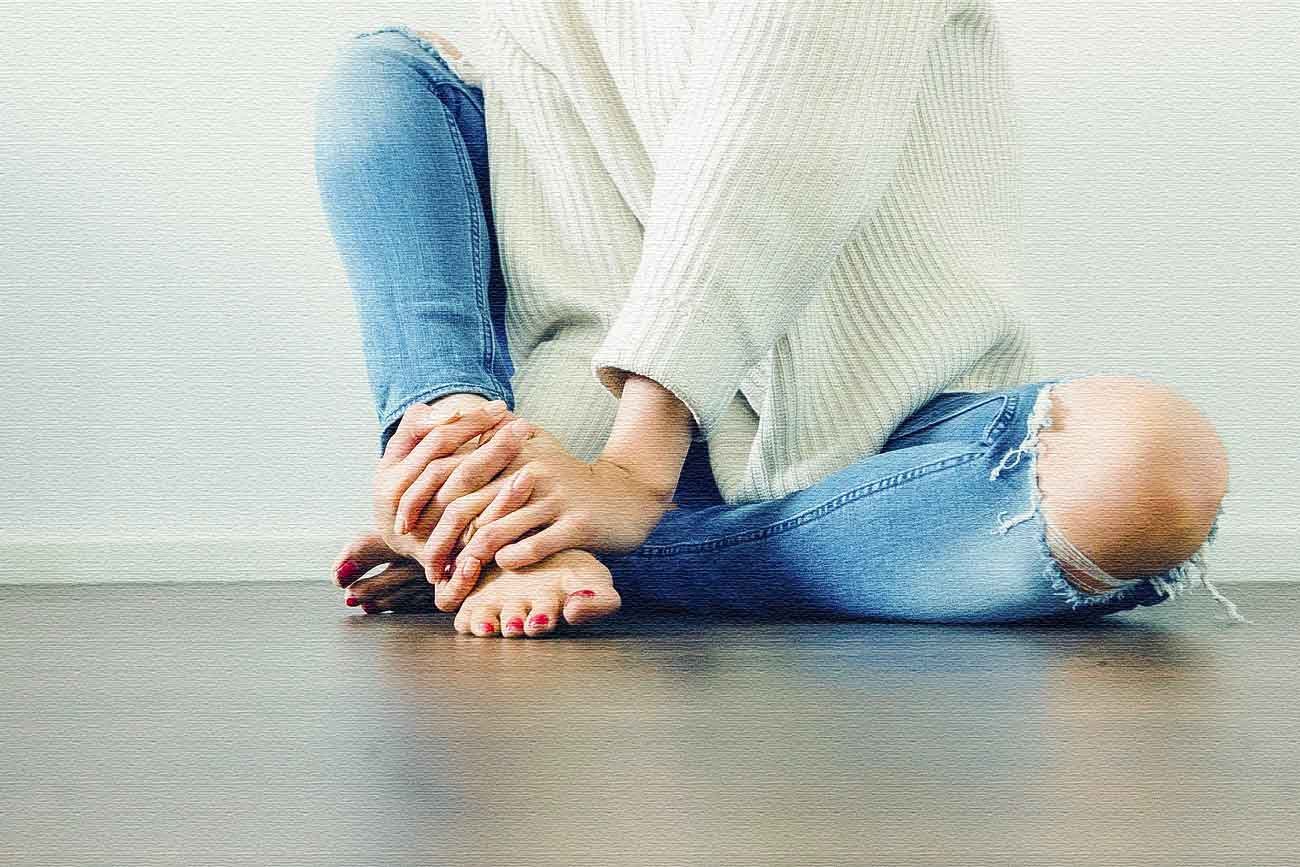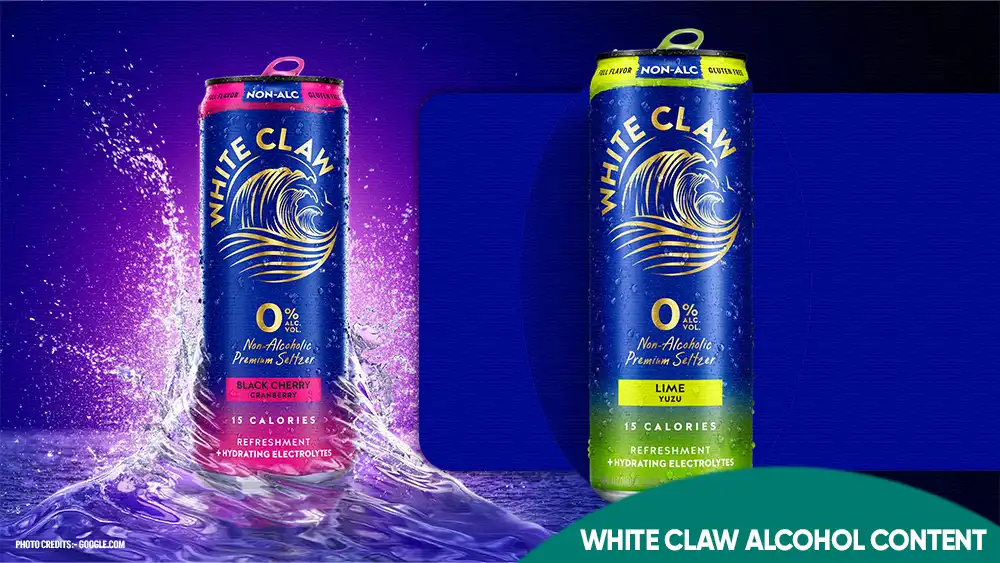
HEALTH BLOG
Managing Vaginal Yeast Infections: Causes, Symptoms, and Prevention Strategies
-
 Rahul Priydarss
Rahul Priydarss - March 2, 2024
This article details a study about Managing Vaginal Yeast infections – from causes to prevention strategies. Understand symptoms like itching, abnormal discharge, and burning sensation. Explore treatment options including antifungal medications and preventive measures like hygiene practices and dietary changes. Get insights on associated health conditions and alternative therapies. Empower yourself with knowledge for effective management and prevention of vaginal yeast infections.
What is Vaginal Yeast Infection:
Vaginal yeast infection, also known as vaginal candidiasis, occurs when there is overgrowth of a type of fungus called Candida in the vagina. This fungus is naturally present in the body, but its overgrowth can cause symptoms such as itching, burning, and abnormal vaginal discharge. Yeast infections are commonly caused by factors such as antibiotics, hormonal changes (such as during pregnancy or while taking birth control pills), a weakened immune system, and certain medical conditions such as diabetes.
Treatment of vaginal yeast infections usually involves antifungal medications in the form of topical creams or oral pills. These medications work by killing or stopping the growth of the fungus, thereby relieving symptoms and resolving the infection. It is important for individuals experiencing yeast infection symptoms to consult a healthcare provider for an accurate diagnosis and appropriate treatment, as other vaginal infections may have similar symptoms but require different treatments. Additionally, maintaining good hygiene practices, avoiding tight-fitting clothing, and practicing safe sex can help prevent future yeast infections.

Table of Contents
Causes of Vaginal Yeast Infections:
While this fungus naturally resides in the vagina in small amounts, various factors can lead to its overgrowth, resulting in an infection. Some common causes include.
Antibiotics: Antibiotics can disrupt the balance of bacteria in the vagina, allowing yeast to overgrow. This is because antibiotics not only kill harmful bacteria but also beneficial bacteria that help keep yeast in check. Antibiotics can kill beneficial bacteria in the vagina, leading to an overgrowth of yeast and increasing the risk of infection.
Weakened immune system: A weakened immune system, whether due to conditions like HIV/AIDS, diabetes, or certain medications such as corticosteroids, can make individuals more susceptible to yeast infections. Individuals with weakened immune systems, such as those with HIV/AIDS or undergoing chemotherapy, are more susceptible to vaginal yeast infections.
Pregnancy: Pregnancy alters hormone levels and can change the acidity of the vagina, creating an environment conducive to yeast overgrowth.
Uncontrolled diabetes: Elevated blood sugar levels can promote yeast growth, making individuals with uncontrolled diabetes more prone to yeast infections.
Hormonal changes: Hormonal fluctuations, such as those that occur during the menstrual cycle, pregnancy, or menopause, can disrupt the natural balance of yeast and bacteria in the vagina.
Sexual activity: While yeast infections are not considered sexually transmitted infections, sexual activity can sometimes lead to irritation or abrasions in the genital area, making it easier for yeast to overgrow.
Poor hygiene: Practices such as wearing tight-fitting, non-breathable clothing, using scented feminine hygiene products, or not changing out wet clothing promptly can create an environment conducive to yeast overgrowth.
Diet: Consumption of a diet high in sugar and refined carbohydrates can promote yeast growth, as yeast feeds on sugar.
Candida Overgrowth: The overgrowth of Candida albicans, a naturally occurring fungus in the vagina, can lead to infection when the balance of bacteria and yeast in the vagina is disrupted.
Symptoms of Vaginal Yeast Infection:
According to many studies and research, here are more detailed explanations of the symptoms of a vaginal yeast infection.
Itching and irritation: The itching associated with a yeast infection can be intense and persistent. It often affects the external genital area (vulva) but can also extend into the vaginal canal. This itching may worsen during periods of increased moisture, such as after swimming or bathing, and can interfere with daily activities and sleep.
Abnormal discharge: The discharge in a yeast infection is typically thick, white, and resembles cottage cheese in texture. It may be odorless or have a mild, yeasty smell. This discharge is a result of the overgrowth of yeast in the vaginal area. It’s important to note that not all vaginal discharge is indicative of a yeast infection, so changes in discharge should be evaluated by a healthcare provider.
Burning sensation: Many individuals with a yeast infection experience a burning sensation, particularly during urination or sexual intercourse. This burning sensation is often due to the irritation and inflammation of the vaginal tissues caused by the overgrowth of yeast. It can range from mild to severe and may be accompanied by redness and swelling.
Redness and swelling: The vulva and vaginal tissues may appear red, swollen, and inflamed in a yeast infection. This inflammation is a result of the body’s immune response to the presence of the yeast. The redness and swelling can contribute to discomfort and may make it painful to touch or wear tight clothing.
Painful intercourse: Due to the inflammation and irritation of the vaginal tissues, sexual intercourse may be painful or uncomfortable for individuals with a yeast infection. The friction and pressure of intercourse can exacerbate symptoms such as itching, burning, and soreness. It’s important to communicate with your partner and seek medical advice if sexual activity is causing discomfort.
Soreness: The vaginal area may feel sore and tender in a yeast infection, especially during activities such as walking or sitting for extended periods. This soreness is often due to the inflammation and irritation of the tissues caused by the overgrowth of yeast. It may be accompanied by a general feeling of discomfort or achiness in the pelvic region.

Diagnosis of Vaginal Yeast Infection:
Diagnosing a vaginal yeast infection typically involves a combination of medical history assessment, physical examination, and laboratory tests. Here’s how the diagnosis is typically made:
Medical history assessment: Your healthcare provider will begin by asking about your symptoms, including any itching, abnormal discharge, or discomfort in the vaginal area. They may also inquire about your medical history, including any past instances of yeast infections or other vaginal infections, as well as any recent antibiotic use or changes in hygiene practices.
Physical examination: A visual examination of the external genital area (vulva) and the vaginal canal will be performed to assess for signs of inflammation, redness, swelling, or abnormal discharge. Your healthcare provider may also perform a pelvic exam to further evaluate the vaginal tissues.
Vaginal swab or sample: In some cases, your healthcare provider may collect a sample of vaginal discharge using a cotton swab or a small spatula. This sample is then examined under a microscope or sent to a laboratory for further analysis. The presence of yeast cells, along with other factors such as pH levels and the absence of other types of organisms, can help confirm the diagnosis of a yeast infection.
Testing of pH: A pH test may be performed to assess the acidity level of the vaginal environment. Yeast infections typically occur in an environment with an elevated pH, so a pH level higher than 4.5 may support the diagnosis of a yeast infection.
Some Other tests: In some cases, additional tests may be performed to rule out other potential causes of symptoms, such as bacterial vaginosis or sexually transmitted infections. These tests may include cultures, PCR tests, or antigen/antibody tests, depending on the suspected cause.
Treatment Options for Vaginal Yeast Infection:
Treatment for a vaginal yeast infection typically involves antifungal medications, which can be administered in various forms. Here are the common treatment options:
Over-the-counter (OTC) antifungal creams or suppositories: These medications, such as-
- Clotrimazole (Globe)
- Miconazole (Monistat)
- Tioconazole (Vagistat)
All these medications are available without a prescription and are often used as the first-line treatment for uncomplicated yeast infections. They are applied directly to the vulva or inserted into the vagina using applicators. Treatment durations vary but are typically 1 to 7 days, depending on the product.
Prescription-strength antifungal medications: In cases of more severe or recurrent yeast infections, your healthcare provider may prescribe oral antifungal medications such as
- Fluconazole (Diflucan)
This medication is taken as a single dose or in multiple doses over several days, depending on the severity of the infection.
Topical antifungal ointments: In addition to creams and suppositories, antifungal medications are available in ointment or gel form, which can be applied externally to the vulva to relieve itching and discomfort.
- Econazole
- Clotrimazole
- Ketoconazole
- Lotrimin
Home remedies: Some individuals may opt for home remedies or natural treatments to relieve symptoms of a yeast infection. These may include probiotics, boric acid suppositories, tea tree oil, or yogurt. While some people find relief with these remedies, it’s essential to consult a healthcare provider before trying them, as they may not be suitable for everyone and could potentially worsen the infection.
Preventive measures: Along with treatment, it’s important to take preventive measures to reduce the risk of recurrent yeast infections. These may include practicing good hygiene, wearing breathable cotton underwear, avoiding tight-fitting clothing, and maintaining a healthy diet low in sugar and refined carbohydrates.
Antibiotics Role In Vaginal Yeast Infection:
According to all our doctors who are health care consultants or gynecologists, many such antibiotics are used but some antibiotics work well, one of which is Cefixime, Doxycycline, and Amoxicillin but these medicines are also effective sometimes- Sometimes these work well for women. According to the doctor, this medicine is not as effective as amoxicillin, the winner in this is doxycycline.
Amoxicillin for vaginal infection:
It is a good medicine but it is not as effective in treating vaginal yeast infections as it should be, which is why doctors rarely prescribe this medicine to patients who have such a problem. Doctors consider it appropriate to give doxycycline or Cifixime instead.
Prevention Methods for Vaginal Yeast Infection:
Preventing vaginal yeast infections involves adopting certain lifestyle habits and practices that help maintain a healthy vaginal environment. Here are some prevention methods.
Practice good hygiene: Keep the vaginal area clean and dry. Avoid using harsh soaps, douches, or feminine hygiene products that can disrupt the natural balance of bacteria and yeast in the vagina.
Wear breathable clothing: Choose underwear made from breathable fabrics like cotton and avoid tight-fitting clothing, especially in the genital area. Moisture and warmth create an ideal environment for yeast to thrive, so wearing breathable clothing helps keep the vaginal area dry and less conducive to yeast overgrowth.
Avoid irritating products: Avoid using scented tampons, pads, or panty liners, as well as scented or flavored lubricants. These products can irritate the vaginal tissues and disrupt the natural pH balance, increasing the risk of yeast infections.
Practice safe sex: Use condoms during sexual intercourse to reduce the risk of sexually transmitted infections (STIs) that can increase the risk of yeast infections. Avoiding multiple sexual partners and practicing good hygiene before and after sex can also help prevent yeast infections.
Limit antibiotic use: Only use antibiotics when necessary and as prescribed by a healthcare professional. Antibiotics can disrupt the balance of bacteria in the vagina, increasing the risk of yeast overgrowth. If you need to take antibiotics, consider taking probiotics or eating yogurt with live cultures to help maintain healthy vaginal flora.
Manage chronic conditions: If you have conditions such as diabetes or HIV/AIDS that weaken the immune system or increase the risk of yeast infections, work with your healthcare provider to manage these conditions effectively. Keeping blood sugar levels under control and following treatment plans can help prevent recurrent yeast infections.
Maintain a healthy diet: Eating a balanced diet rich in fruits, vegetables, whole grains, and lean proteins can help support overall health, including immune function. Limiting the intake of sugary foods and refined carbohydrates can also help prevent yeast overgrowth, as yeast feeds on sugar.
Change out of wet clothing promptly: After swimming or exercising, change out of wet clothing, such as swimsuits or sweaty workout clothes, as soon as possible. Moisture trapped against the skin can create an environment conducive to yeast growth.
Association With Other Health Conditions and Vaginal Yeast Infections:
Vaginal yeast infections can sometimes be associated with or influenced by other health conditions. Here are some connections between vaginal yeast infections and other health conditions:
Diabetes: Uncontrolled diabetes, especially with elevated blood sugar levels, can create an environment conducive to yeast overgrowth. Yeast feeds on sugar, so individuals with diabetes are at a higher risk of developing recurrent or severe yeast infections.
Immune system disorders: Conditions that weaken the immune system, such as HIV/AIDS or autoimmune diseases, can increase susceptibility to yeast infections. A weakened immune response may not effectively control the growth of yeast, leading to more frequent or severe infections.
Pregnancy: Hormonal changes during pregnancy can alter the vaginal environment, making it more favorable for yeast overgrowth. Pregnant individuals are at an increased risk of developing yeast infections, especially during the second trimester.
Antibiotic use: Taking antibiotics can disrupt the balance of bacteria in the vagina, allowing yeast to overgrow. This can lead to the development of a yeast infection, particularly in individuals who are prone to such infections.
Birth control pills and hormonal contraceptives: Some forms of birth control, particularly those containing estrogen, can increase the risk of yeast infections by altering hormone levels and the vaginal environment. Individuals using hormonal contraceptives may be more susceptible to yeast infections.
Steroid use: Corticosteroids, whether taken orally, inhaled, or applied topically, can suppress the immune system and increase the risk of yeast infections. Steroids can also promote yeast overgrowth by altering the body’s inflammatory response.
Sexually transmitted infections (STIs): While yeast infections are not sexually transmitted, they can sometimes occur alongside STIs or other vaginal infections. Having an STI or a compromised vaginal microbiome due to other infections may increase the likelihood of developing a yeast infection.
Obesity: Obesity has been linked to an increased risk of yeast infections, possibly due to changes in the skin folds and increased moisture in the genital area, which create an environment conducive to yeast overgrowth.
Alternative Treatments and Therapies for Vaginal Yeast Infection:
It’s essential to note that these alternative treatments may not be as extensively studied or regulated as conventional medications, so it’s essential to consult with a healthcare provider before trying them. Here are some alternative treatments and therapies for vaginal yeast infections.
Probiotics: Probiotics are beneficial bacteria that can help restore the natural balance of microorganisms in the body, including in the vagina. Some research suggests that oral or vaginal probiotics may be effective in preventing and treating yeast infections by promoting the growth of beneficial bacteria and inhibiting the growth of yeast. Probiotic supplements containing Lactobacillus strains are commonly used for this purpose.
Yogurt: Some individuals find relief from vaginal yeast infections by applying plain, unsweetened yogurt topically to the affected area or by consuming yogurt orally. Yogurt contains live cultures of beneficial bacteria, such as Lactobacillus acidophilus, which may help rebalance the vaginal microbiome and inhibit the growth of yeast. However, more research is needed to confirm the effectiveness of yogurt as a treatment for yeast infections.
Boric acid suppositories: Boric acid suppositories are capsules containing boric acid, a compound with antifungal properties. Some studies have shown that boric acid suppositories may be effective in treating recurrent or resistant yeast infections, particularly those caused by Candida species that are resistant to conventional antifungal medications. However, boric acid can be toxic if ingested or used improperly, so it’s essential to use it under the guidance of a healthcare provider.
Tea tree oil: Tea tree oil, derived from the leaves of the Melaleuca alternifolia tree, has natural antifungal properties and may be used topically to treat yeast infections. However, tea tree oil can be irritating to the skin and mucous membranes, so it should be diluted with carrier oil (such as coconut oil) before use. It’s important to perform a patch test before applying tea tree oil to ensure that you do not have an allergic reaction or sensitivity.
Garlic: Garlic contains compounds with antifungal properties, and some people use garlic cloves or garlic supplements as a natural remedy for yeast infections. However, evidence supporting the effectiveness of garlic in treating vaginal yeast infections is limited, and garlic may irritate or burning when applied topically. More research is needed to determine the safety and efficacy of garlic as a treatment for yeast infections.
FAQs about Vaginal Yeast Infections:
A1: Vaginal yeast infections are primarily caused by an overgrowth of the fungus Candida albicans. Factors that can contribute to this overgrowth include antibiotic usage, weakened immune system, hormonal changes, pregnancy, uncontrolled diabetes, and poor hygiene practices.
A2: Common symptoms of a vaginal yeast infection include itching and irritation in the vaginal area, abnormal discharge (thick, white, resembling cottage cheese), burning sensation, redness and swelling of the vulva, painful intercourse, and soreness.
A3: Diagnosis typically involves a medical history assessment, physical examination, and laboratory tests. Healthcare providers may collect a sample of vaginal discharge for microscopic examination or perform pH testing to confirm the presence of yeast.
A4: Treatment usually involves antifungal medications, which are available over the counter or by prescription. These medications may be in the form of creams, ointments, suppositories, or oral tablets. Alternative treatments such as probiotics, yogurt, boric acid suppositories, and tea tree oil are also sometimes used.
A5: While it may not always be possible to prevent yeast infections, there are some steps you can take to reduce your risk. These include practicing good hygiene, avoiding douching and using scented feminine hygiene products, wearing breathable cotton underwear, avoiding tight-fitting clothing, and managing underlying health conditions such as diabetes.

-Please remember, to always consult with healthcare professionals or Doctors for personalized advice related to medical conditions.
Conclusion:
Vaginal yeast infections are common fungal infections that can cause discomfort and irritation for many women. Understanding the causes, symptoms, and treatment options is essential for effective management and prevention. By maintaining good hygiene, avoiding irritants, and seeking appropriate medical care, individuals can reduce the risk of recurrent infections and promote overall vaginal health.




